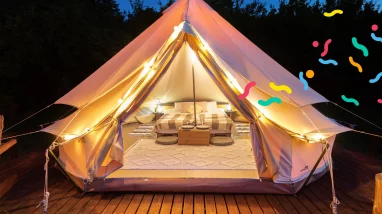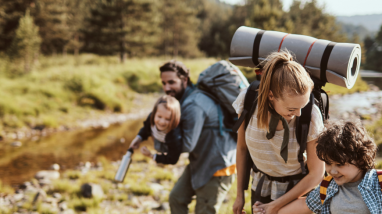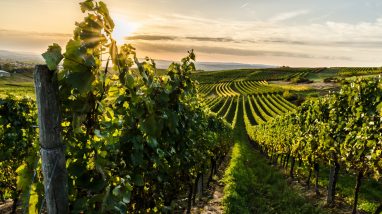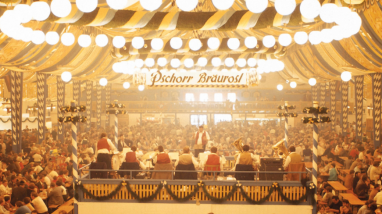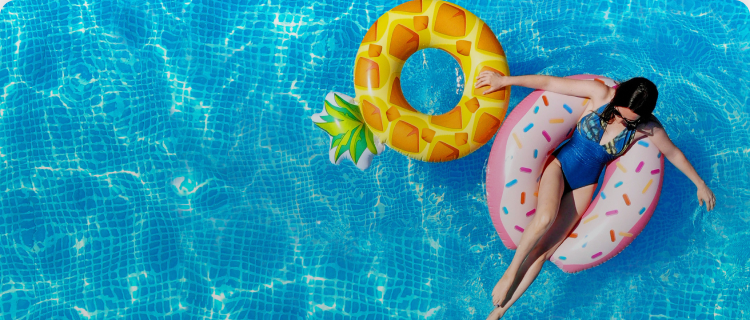So, glamping (or ‘glamourous camping’ if you’ve the time) is officially a thing. Well, it’s been a BIG thing for a while now. At first, it was travel’s best kept secret, but soon became increasingly trendy, and has now reached enough critical mass that, dare we say, is becoming as desirable as traditional camping.
Glamping accommodation combines basic living with a boutique edge, culture and connection with comfort, and campsite hosts are having so much fun customising the experience for their visitors; so much so, that you’ll rarely find two accommodations the same.
It’s easy to understand why there’s such a buzz: experiencing this bespoke camping style has provided us with more than one reason to hit the open road and head into the outdoors. For some purists, glamping will never be proper camping. For others, it’s a must-try alternative – or the gateway that leads them from hotels to the outdoors.
In this guide to glamping we’ll introduce you to this eccentric past-time, its origins and how you can plan a luxury outdoor holiday with ease.
Click on the links below to take you directly to a section of interest:
- What is glamping?
- The history of the glamping movement
- What are the types of glamping accommodation?
- How much does glamping cost?
- What activities can you do whilst glamping?
- Glamping tips for beginners
- 5 unique glamping experiences in France
What is glamping?
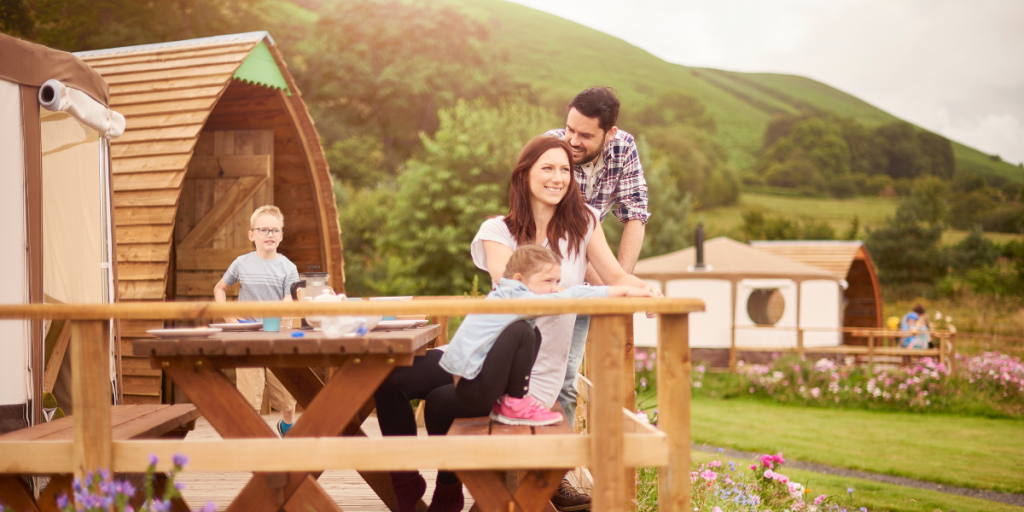
Glamping is considered the top end of the camping market. It differs from ‘normal’ camping in that the focus is on comfort, luxury, creativity and creating a home-from-home without having to fill your suitcase with supplies for living wildly.
Glamping appeals to all outdoor adventurers, from single-travellers or large groups, to families of all ages and pet-owners. Whether you’re looking for an eco-pod in the woods for one, or a novelty family stay in Hansel and Gretel’s gingerbread hut, the diverse spectrum of glamping accommodation means there’s something for everyone.
More often than not, glamping sites are ready for you to move into straight away. The beds (yes, real beds) may well be already made up with fresh linen, and the fire, wood burner or frontier stove (a super-efficient type of wood-burning cooker) lit ready for your arrival.
The nitty-gritty of ‘normal’ camping such as putting up the tent, carrying heavy backpacks or pumping up lilos become a thing of the past! For some people, of course, these are the things that make camping such a joy, but for those who’d rather concentrate on taking it easy, it makes the whole experience a whole lot less like work.
So, all you have to do is pop your bags down, put the kettle on and focus on having fun – and the ultimate relaxation that compliments it.
And here’s the best thing, you’ll find glamping accommodation in the same tranquil, wild outdoor spaces as you would at traditional campsites. Actually, many open-air holiday hosts provide both options on the same camping grounds, so you’ll still feel very much part of the camp community and gain that shared connection to nature.
The history of the glamping movement
Glamping has always been with us, with early documentations pre-dating 5000BC. It’s just that, until recent times, you could argue that it didn’t have a name. Until the term was first coined sometime in the early 2000s, ‘glamping’ (glamourous camping) was just camping with all the luxuries.
Wanting to live comfortably is nothing new, even for people on the move. Nomads and wandering folk have always taken everything with them – including the kitchen sink – simply because that’s the way they lived.
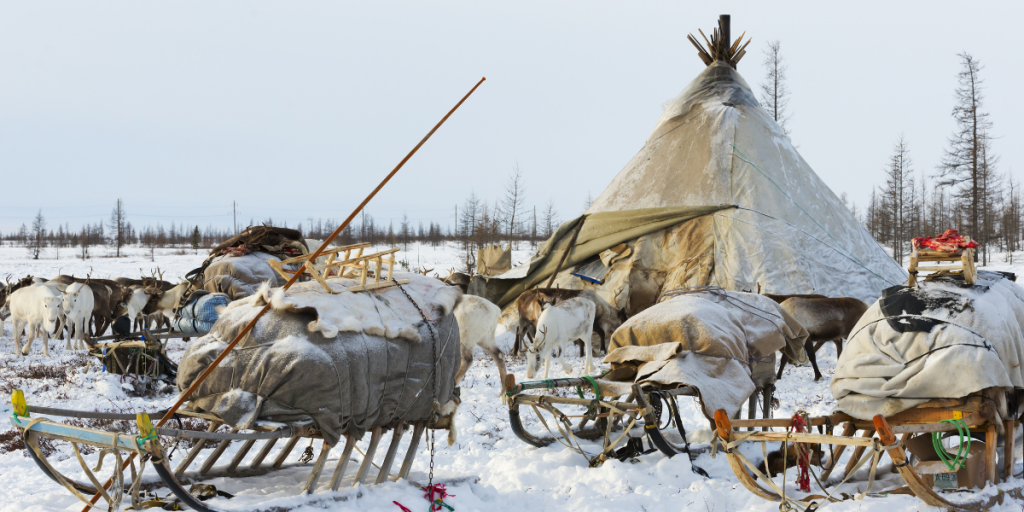
They might have led harsh lives compared to ours, but their temporary dwellings weren’t without their comforts. They had animal skins and finely woven carpets to make life better. As well as open fires, cooking pots, washing facilities and everything else they needed for a life on the move.
Even the ‘motorised vagabonds’ who explored 1920s America (and these include Henry Ford) didn’t go without their ‘basic necessities’. The USA’s first motorhome, the Pierce Arrow Touring Landau, an expensive and luxurious coach-built car-come-camping wagon, had a bed, a toilet and a telephone so you could phone the chauffeur!
Glamping today still pays homage to these age-old traditions and continues to celebrate and consider the lay of the land, creating holiday homes that complement the landscape and help residents feel ‘at one’.
>>Check out this incredible glamping house built into the hilly landscape of South Cantal <<
Types of glamping accommodation
As we write this, there’s a good chance some glamping innovator has launched the latest debutante in glamping innovation, like a glamping spaceship or converted war-bunker, endorsed by rave influencers, and ready for its Lonely Planet vlog debut!
In the meantime, there’s an exciting choice of glamping options available in today’s open-air holiday market, think luxury treehouses overlooking the South African savannahs, gypsy caravans lining the base of the French Pyrénées, biodomes creating a panorama of the Northern Lights. The ‘what’s next?’ question thrills us massively!
There’s still a place for the OG static caravans and traditional mobile homes on the glamping scene, and their consistent popularity (due to their practicality) proves they’re at little risk of being overshadowed, but there’s a new wave of camper, looking for something a little more unique and unorthodox.
Here’s a few (of many) types of glamping accommodation you’ll find on our website, available to book today!
Glamping in a bell tent
Glamping tents do come in a range of shapes and sizes, but one of the most recognisable and synonymous with modern day glamping is the bell tent (or as some of us call them in France ‘tente nomade’).
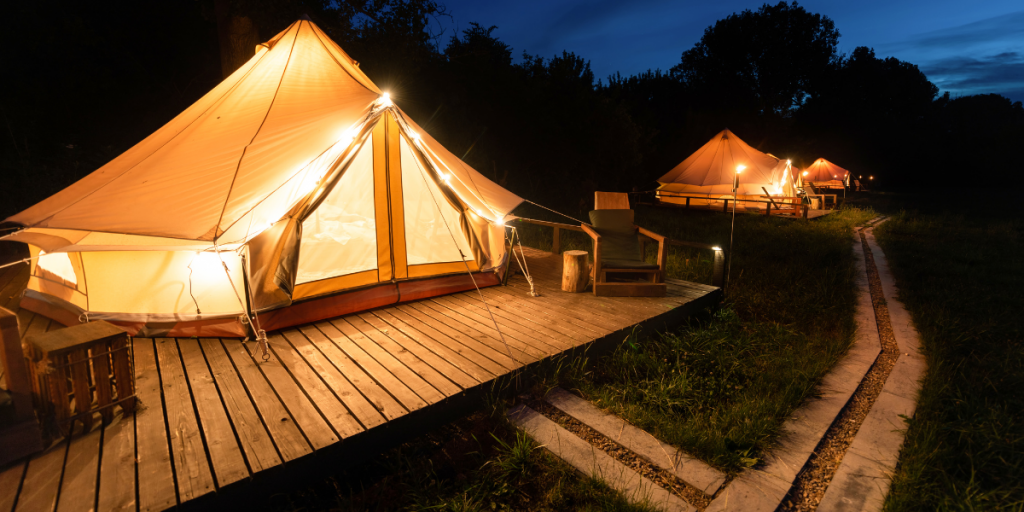
Some claim the bell tent originated in the 1850s by native Americans, others argue that the nomadic tribes of Northern Europe lay claim to the design. Either way, US Army Colonel Henry Hopkins Sibley threw a spanner in the debate by patenting the design and licensing it to the US Army.
The bell tent has seen mass structural evolution since the 19th century, from cotton canvas strung on a single wooden pole, to the evolution of A-frames and more durable materials – but its distinctive bell shape has remained unchanged (thankfully).
Yes. Bell tents are practical, rich in history, beautiful in nature and have a low-environmental impact. They’re cosy enough for a couple with a dog, but versatile enough for families and larger families too.
>> Just look at these beautiful bell-tents at Camping Le Clos Bouyssac in Occitanie, France. <<
You’ll find glamp site hosts across Europe and beyond who are embracing the tent’s unique cultural identity, decorating the canvas externally with bunting and fairy lights and filling the tent with boutique interiors, luxury bedding, cooking equipment and lots of ‘little touches’ to personalise their visitor’s experience.
We love the safari-inspired styling of the bell-tents at Camping La Corona campsite, in the Costa Daurada region of Spain.
Glamping in a yurt
Born in Central Asia and famed for their unique, circular shape, yurts are circular tents with an intricate inner wooden frame, coned roof and traditionally made with an animal skin, felt or wool covering.
Also known as ‘gers’, yurts reportedly date back to the 5th century BC are still used in rural Mongolia as culturally important homes to nomadic communities.
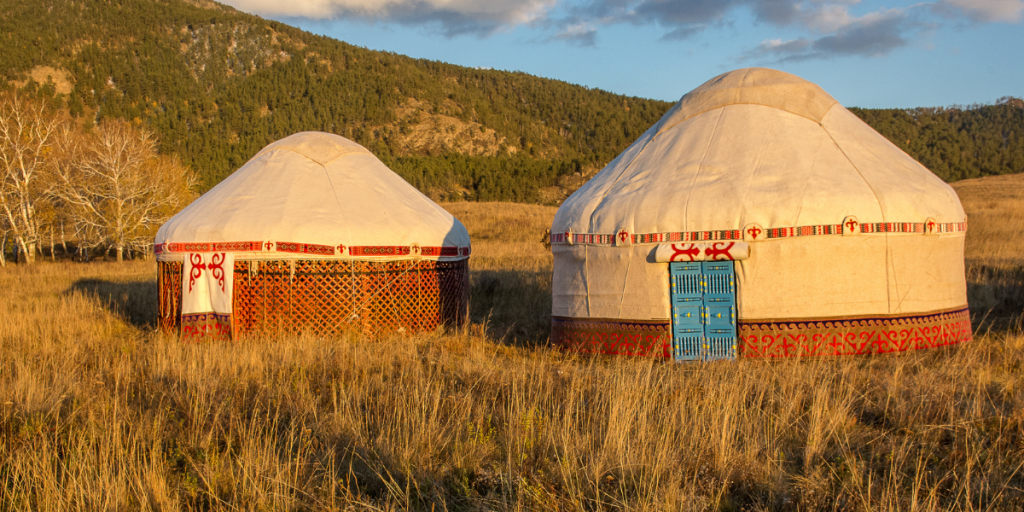
>> Check out these authentic Mongolian Glamping Yurts, in Northern Ardeche, France. <<
It’s no wonder that yurts have withstood the test of time and are fiercely protective against the elements, their structure is a masterclass in architectural composition. In total, a yurt comprises of a circular base, trellis frame, portable wooden lattice walls, roof poles, a central roof ring, a door frame and multiple covering layers.
Modern day glamping yurts pay respect to the age-old design, but add modern amenities and extravagant furnishings. You might find a hot tub and dining area on the patio area by your yurt.
Yes. Yurts are well-insulated, comfortable and born to thrive in nature. They’re often found in batches with entertaining communal areas, and so are ideal for groups of friends / family too.
Glamping in a safari tent
Inspired by African natives and built to withstand extreme heat whilst giving safari tourists a home-from-home experience, safari tents are very popular within the world of glamping as they combine comfort with culture for the ultimate outdoor experience, wherever you pitch up in the world.

Campsites offer varying degrees of ‘glamour’, from stripped-back canvas shelters, to luxury safari huts, cabins and lodges like the ones enjoyed at this popular campsite in the beautiful bastides of Dordogne, France.
Or, why not go all-out and book a once-in-a-lifetime safari tent experience with easy access to a real South African safari? De Pakhuys campsite in the spectacular Agter-Pakhuis Valley of Western Cape, offers both!
Glamping in a tipi / tepee
Much like safari-tent camping, an open-air holiday in a tipi (or tepee) transports you back to an important indigenous heritage. This time it’s the Native Americans, who were inspired by their more permanent wigwam homes to create these versatile tents as portable housing for their communities.
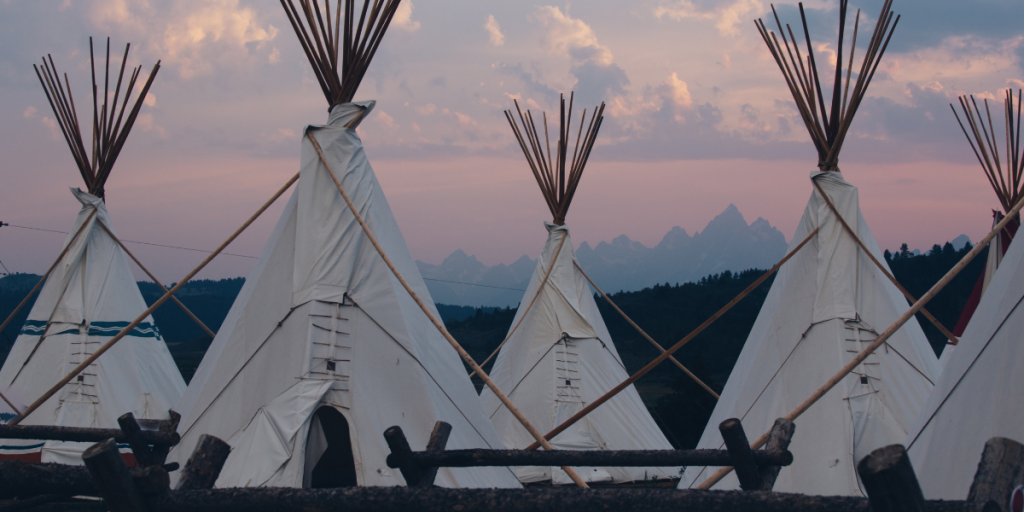
Campsites with tipis and wigwam tents are attracting visitors from far and wide who love their spaciousness, look and feel. They’re often customised with luxurious and artistic touches, as well as amenities like a kitchenette and artistic furnishings.
Or you can strip back the experience entirely and gain a deeper connection to their origin. Stay in an authentic tipi at a campsite in the Eastern Pyrenees. You’ll immerse yourself in nature’s wilderness, whilst still accessing those important home comforts, like fresh bedding and wash facilities.
Glamping in a treehouse
There’s no better way to embrace your inner-child than a treehouse glamping holiday. It’s true. The nostalgia felt from sleeping in a treehouse is incomparable – and its timeless joy can be enjoyed by families of all ages.
Usually wooden structures amid a forest canopy, treehouses defy gravity and offer the best views of the surrounding nature and sky above.
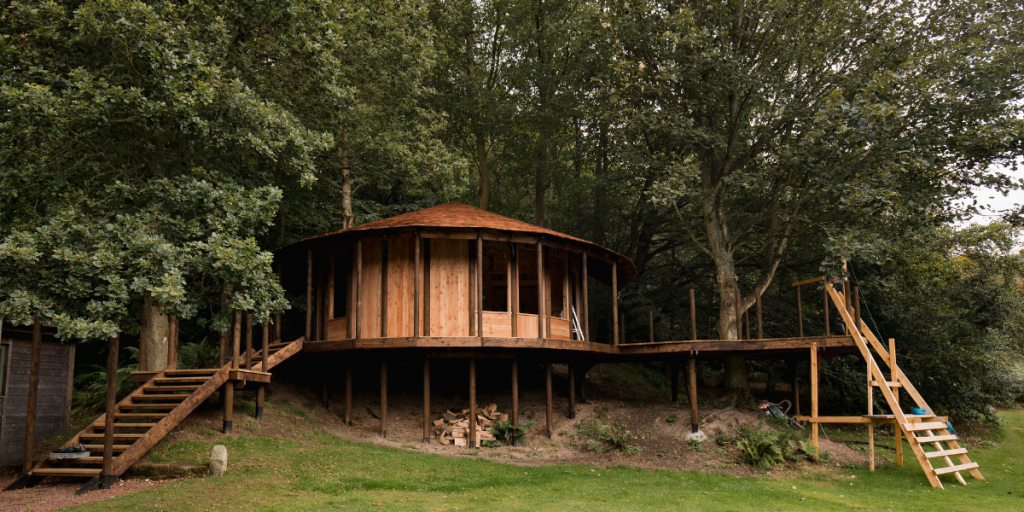
We’ve seen an evolution in treetop housing over the last few years, with the very innovative designs and functionality appearing. Campsites such as DéfiPlanet’ in Dienne offer a whimsical forest experience, with the most inspired, self-contained treehouses, joined by suspension bridges.
Glamping in a gypsy caravan / roulotte
Traditionally horse-drawn and inhabited by travelling communities since the 19th century, gypsy caravans (also known as wagons or roulottes) are intricately handcrafted and beautifully decorated. They are of great historical significance, especially to our camping world, where we continue to celebrate nomadic living and its ever-evolving relationship with modern society.
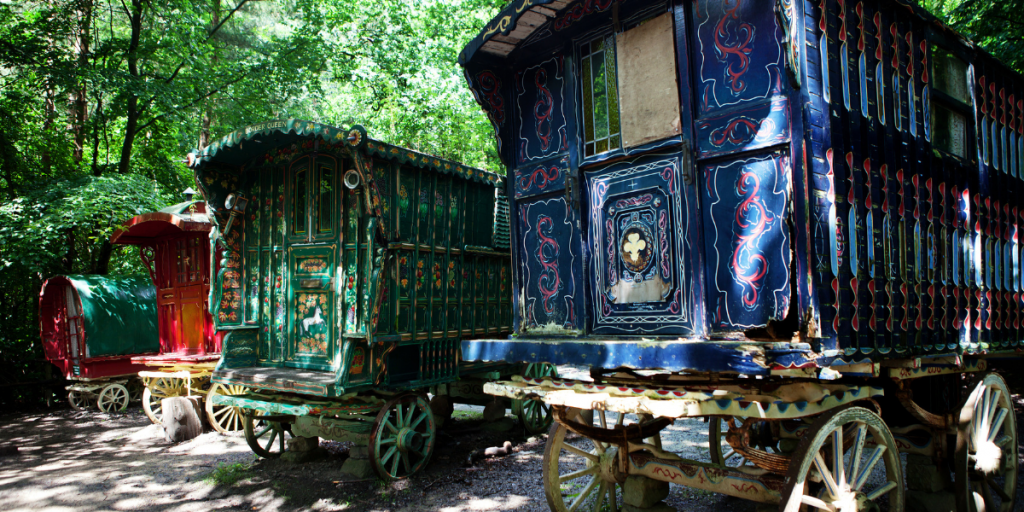
Owing to their natural purpose as a house for working families, gypsy caravans are perfect for self-contained, comfortable family glamping. Whether replicas or reconditioned originals, this type of bespoke accommodation sits proudly like a work of art in nature.
Check out the roulotte tzigane, a traditional French gypsy caravan, with authentic wooden carvings, housed at this superb campsite in Le Nizan.
Glamping in a wooden lodge / log cabin
There are many types of static wooden houses reigning supreme in glamp sites across the world. We’re perhaps more familiar with those quaint, wintery scenes on a postcard or online, advertising cosy log cabin retreats nestled amongst snow-capped trees and yes, that sounds idyllic… But these robust structures make for wonderful homes all year round, in any natural environment.
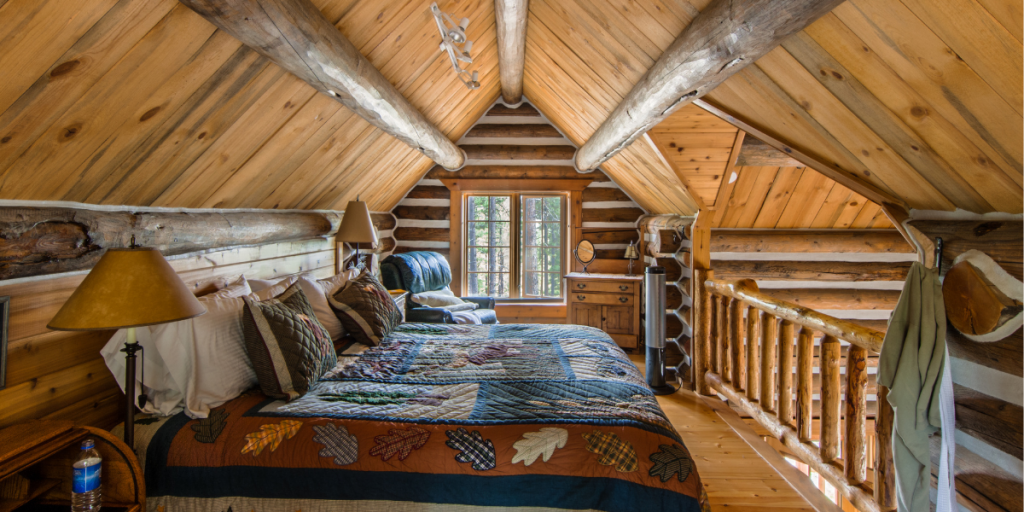
A great example of the versatility of wooden glamping homes can be found at this quaint riverside campsite in Dordogne, where you’ll find floating cabins and woodland cottages.
Whether made from interlocking logs or repurposed timbers, glamping visitors love the safe, snug feeling you get from staying in a wooden lodge, hut or cabin. They also feel connected to their surroundings, thanks to the sight and smell of exposed wood.
Campsites like Ohai Nazaré in Portugal reinforces canvas tents with wooden structures to create ‘tent lodges’ – and have a few magnificent wooden bungalows too.
On a smaller scale, and similar in function to wooden glamping pods (which we’ll talk more about in the next section), wooden glamping huts are also practical, sustainable and prioritise a good night’s sleep. If that sounds like your cup of tea, you’d love this mini glamping hut village in the woodlands of Mozirje, Slovenia.
Glamping in a pod
Glamping pods are typically wooden in construction, compact in layout and have low environmental impact. Whilst glamping pods come in all kinds of interesting shapes, the most popular adaptation on the glamping circuit is the barrel or pitched roof shape, housing one or two bedrooms max.

Glamping pods are a dream investment for campsite hosts due to their low maintenance and sustainability, so you’re likely to find clusters of pods in one area, making this a perfect opportunity for a family getaway (especially if you have teenagers who like their own space).
>> Check out these charming glamping huts in Wiltz, Luxembourg <<
Because of their size, not all glamping pods come equipped with in-house wash and cooking facilities, but most campsites will offer these on-site and you’ll also benefit from a more affordable price per night, as a result.
How much does glamping cost?
No doubt about it, prices for glamping are starting to look decidedly five star. This is probably in direct correlation to this kind of holiday becoming “a thing”.
Don’t let that put you off.
The essence of camping is simple: to get back into nature. Glamping also has that ethos, with a touch of luxury and uniqueness, and it is possible to get back in nature while glamping for a reasonable price.
Glamping is the top end of the camping market, yes.
But while you might expect to pay handsomely for a luxury tipi backstage at a music festival, if you choose to go off-grid and discover the relatively undiscovered, there are lots of places where you can glamp for a lot less than you might think – and certainly a lot less than you’d pay to stay at a boutique hotel or an upmarket B&B.
Camping has always been a great value for money holiday and glamping is no different. However, the price will depend on what you choose. Simple eco-pods can be surprisingly good value, while larger family safari tents on exclusive sites where you are the only guest are going to be more expensive, naturally.
But, at the end of the day it’s all about the experience and being out in nature, spending time with the ones you love and enjoying a carefree existence. And, if your budget can allow, that memory is priceless.
What activities can you do whilst glamping?
Much like traditional camping, glamping invites you to a world of open-air adventure, for its natural ability to connect you to your surroundings, but for the opportunities to explore, play and relax in nature too!
Most campsites can facilitate your access to joyous outdoor activities, be that on-site or on neighbouring land – and sometimes, excursions can cost you nothing at all! Glamping activities could include:
- Walking / hiking trails in nature reserves, countryside or coastal paths
- Extreme sports like mountain biking, paragliding, water rafting
- Swimming in pools, lakes, seas or rivers
- Exploring nearby landmarks, towns and other points of interest
- Spa treatments like saunas, steam rooms, hot tubs
- Kids entertainment like playgrounds, kids clubs, cloud-spotting or other outdoor activities for children.
Glamping helps to distract your mind with new sights, sounds and smells, thus being entirely present in the moment.
>> Read more about the benefits of being active in the great outdoors this year <<
Glamping tips for beginners
- Book well ahead to get the dates you want – or book at the last minute to make the most of the best deals, if you don’t mind travelling. Peak season is always going to be summer and the prices will be higher accordingly. But here’s the thing: booking during off-peak-season is a real treat. Snuggled in a yurt, with a book and a hot chocolate close to hand, while the wind blows outside and the power of nature is all around, is a kind of luxury that puts you at peace with the world.
- Try it for a weekend away or a short break before committing to a week or longer. Booking during the week can often fill awkward gaps for glamping site owners so you may find some great deals. This could be a great excuse for a romantic couple getaway, before deciding whether to bring the kids next time!
- Do your research. There is no ‘one size fits all’ glamping experience – other than enjoying being out under the stars – so doing a bit of research into the types of accommodation that’ll suit you will make all the difference. Is it a yurt or a pod, a bell tent or shepherd’s hut? Revisit our guide above. Only you can decide!
- Stay away from chains. Yes, hospitality chains are getting in on the act. And bringing their pricing structures with them. It’s easy to spot one glamping park, owned by a very well-known five star luxury hotel chain, offering accommodation for €1,700 a night. Yes, really! We’re not here to knock the hotel chains, but it’s also easy to find other glamping parks in the same region, owned by individuals who live on site, for less than a tenth of that.
- Talk to the site owners about what you need to bring, although you can pretty much expect everything to be laid on, including bedding. Some sites do breakfasts and dinner but best to check before so you know what kind of supplies to bring.
- Be prepared with the right clothing. That means taking wellies and walking boots and Pac a Macs and jumpers. While lots of places will have wood burning stoves and open fires, it can still get a little chilly at night. You can’t always rely on good weather and that doesn’t matter if you’re well prepared. Read out ultimate camping checklist here.
- Plan your days out. Glamping sites are often in fantastic locations with lots to see and do when you are there. So think about renting bikes or surfboards or checking out local attractions… a little planning can go a long way when it comes to this.
- Bring the family pet…or not. Some glamping sites welcome dogs with biscuits and open arms, others don’t. So if you are looking for dog friendly glamping or for dog-free glamping, best check it out in our listings first!
- Join the glamping revolution! Whether it’s your first or 50th time glamping, have fun sharing your stories on socials, hashtagging to your heart’s content – and spreading the word on this joyous adventure! Or just follow a few glamping influencers to get a sneaky peak of what’s to expect!
5 unique glamping experiences in France
We’ve scanned the hundreds of bespoke glamp sites on our ever-growing database and proudly present 5 locations inhabited by some of the most of interesting and innovatively designed glamping homes in all of France.
Camping Ecologique La Roche D’Ully
Book La Roche d’Ully campsite today
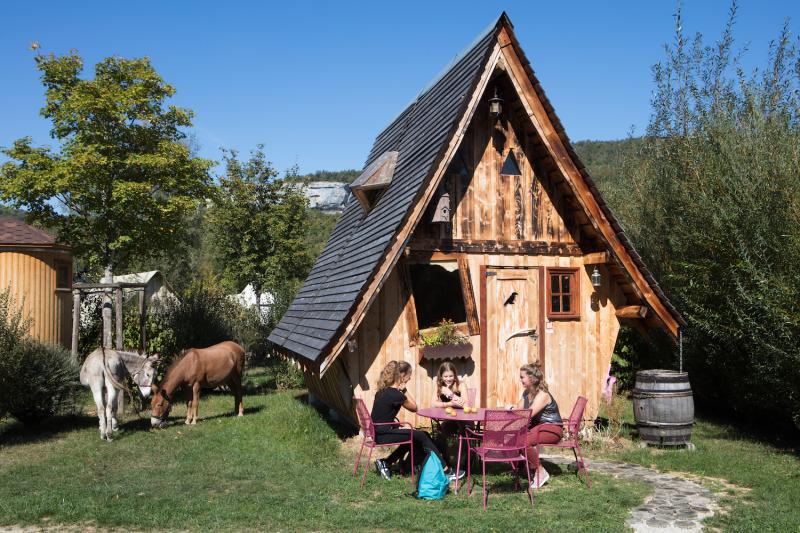
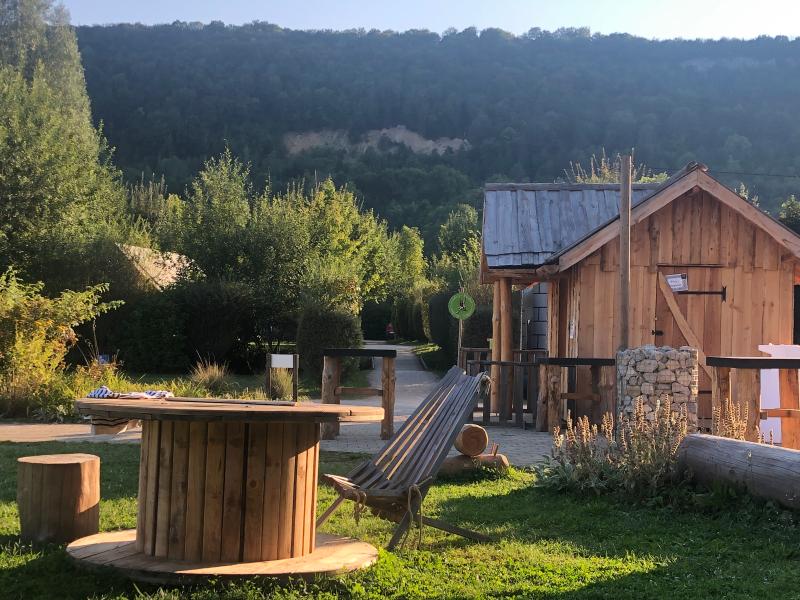
Feast your eyes on this 4-star, eco-camping wonderland, a masterclass in bespoke, boutique living that truly captures the art of play.
Situated at the foot of the majestic Jura Mountains in Gordes de la Loue, this campsite hosts grass pitches for tent / motor-home camping and more than 45 of the most joyful, self-contained glamping homes.
From wooden lodges to chalets on piles (and even a magical fairy hut!), there’s adventure awaiting the whole family. And let’s not forget those luxury touches, like the baroque inspired interior décor, soft furnishings and some glamping homes even include a vintage style, roll-top bath by the bedside. Dreamy!
Camping du Mettey
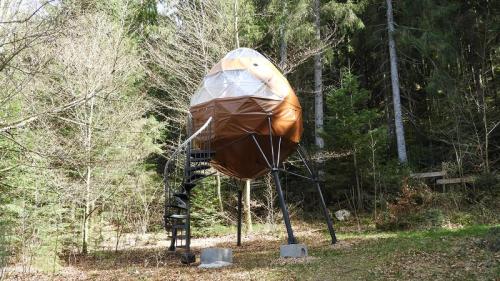
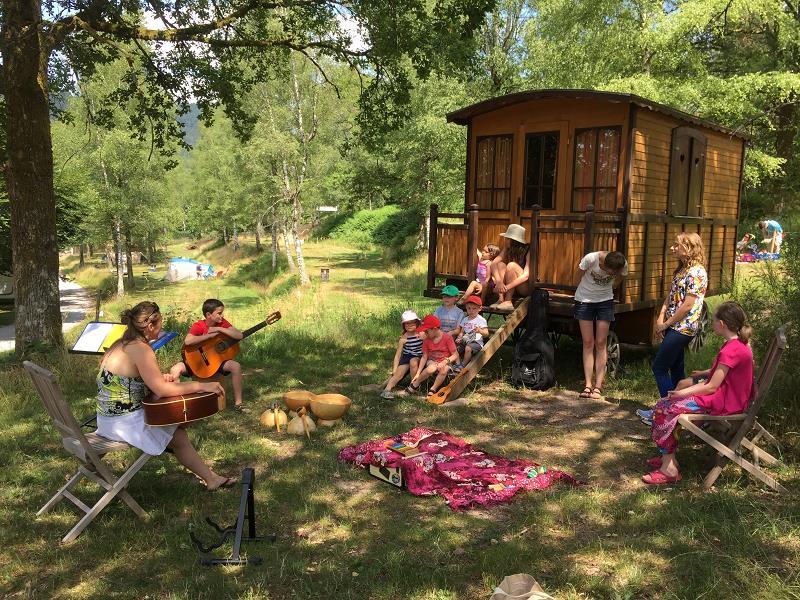
Discover world-class glamping pod ingenuity at this one-of-a-kind campsite in the charming town of Vagney.
Marketed as the ultimate eco-retreat, every inch of land here promotes sustainable living; from the eco-pool cleaned by plants, to a community garden providing the camp restaurant with home-grown, organic ingredients. And, wow, the unique accommodation here is unlike anything you’ve seen before!
Of the 18 glamping homes on site, you’ll have your pick of eccentrically designed domes, cabins, gypsy cars and wooden cabins submerged in the camp’s stunning natural landscape.
Domaine d’Escapa
Book Domaine d’Escapa campsite today
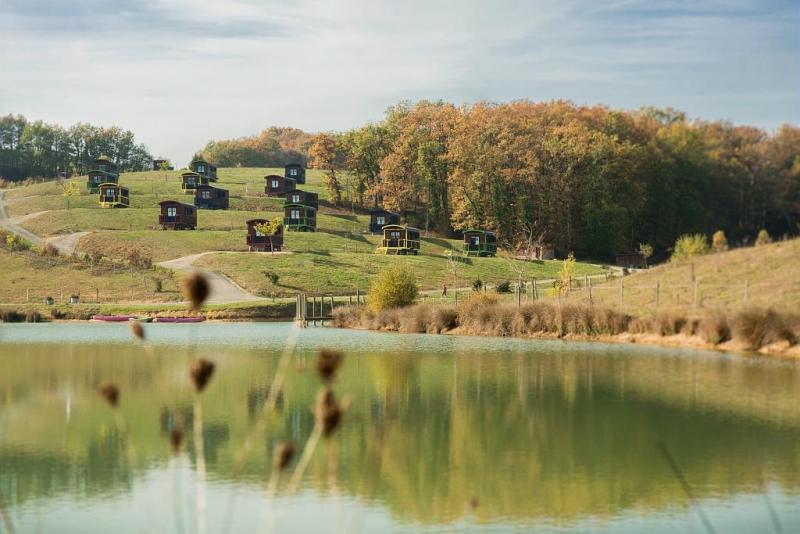
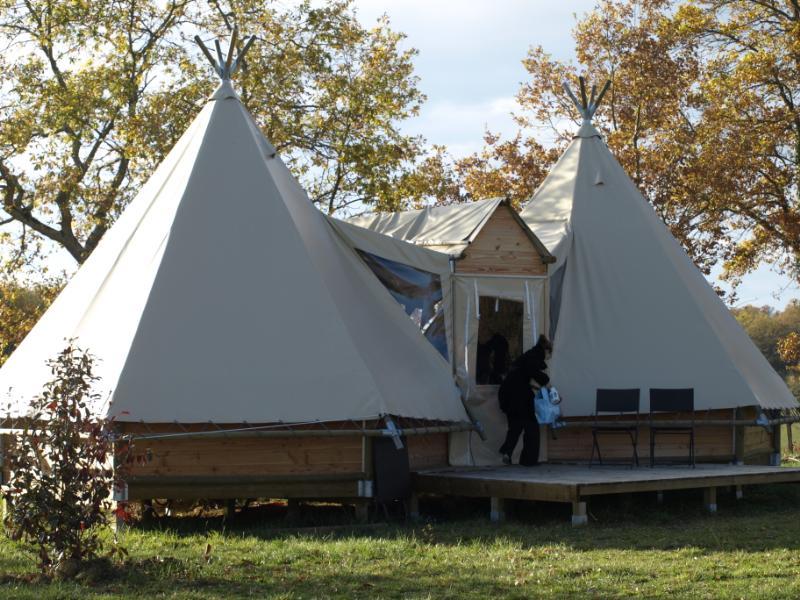
Lakeside glamping in the heart of the Lizet and Baïse valleys of southwestern France is made all the more special by the range of accommodation here.
The alluring teepees, trailers, treehouses, pods and huts at this luxury campsite are all tactfully positioned for optimum countryside views – and each have individual characteristics and extensive amenities to make your stay one to remember.
We especially love the colourful cluster of wooden trailers dotted along the lake’s bed; some featuring a jacuzzi, kitchenette, hammock and terrace – perfect for relaxing after a day of outdoor activity.
Lodges de Blois-Chambord
Book Blois-Chambord campsite today
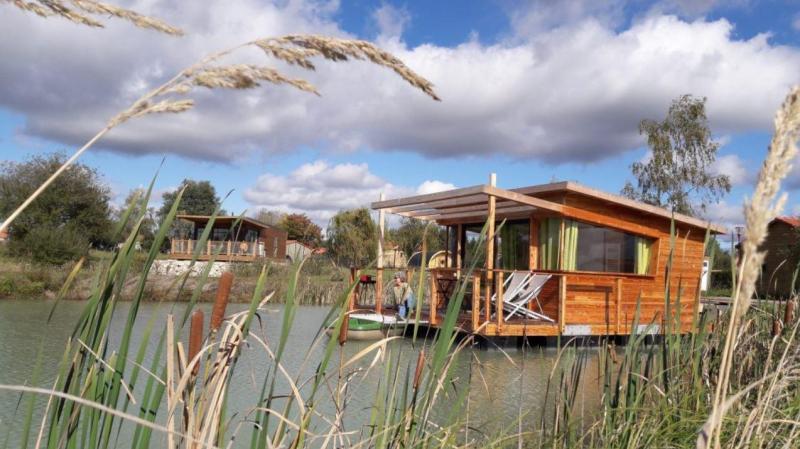
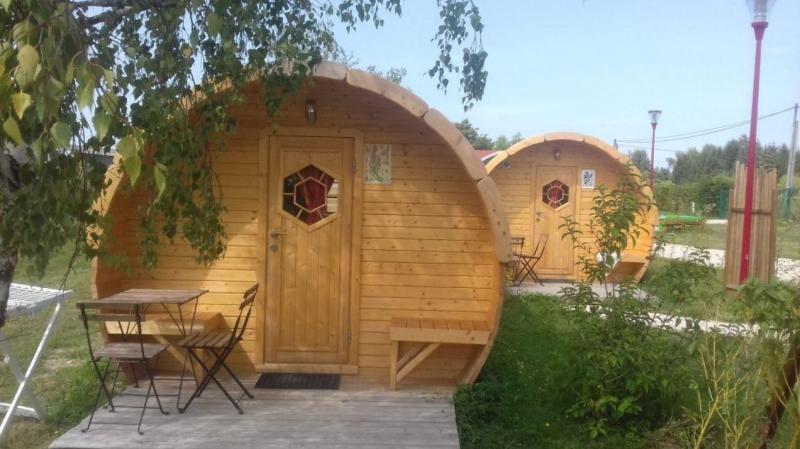
Much like the renaissance heritage of its nearby castles, this impressive campsite in the Chambord region of central France celebrates traditional luxury living, and its transition to modernity.
The glamping homes here are a marvellous mix of angular architecture and luxury living. From simple sleeping pods to floating homes, you’ll have fun choosing whether to stay on the land or the water.
You can take advantage of the heated swimming pools on site, or relax in the sauna after a day of exploring the famous Château de Chambord and other emblematic landmarks in the Loire Valley.
Camping du Domaine D’Anglas
Book Domaine d’Anglas campsite today
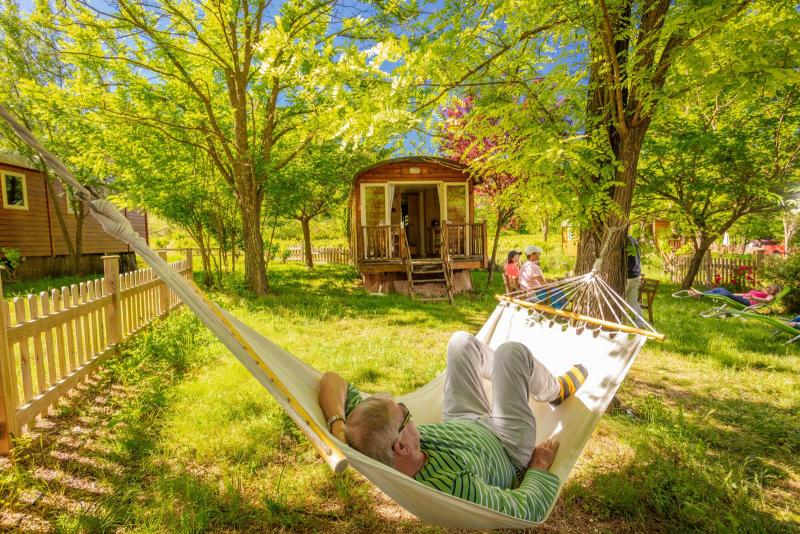
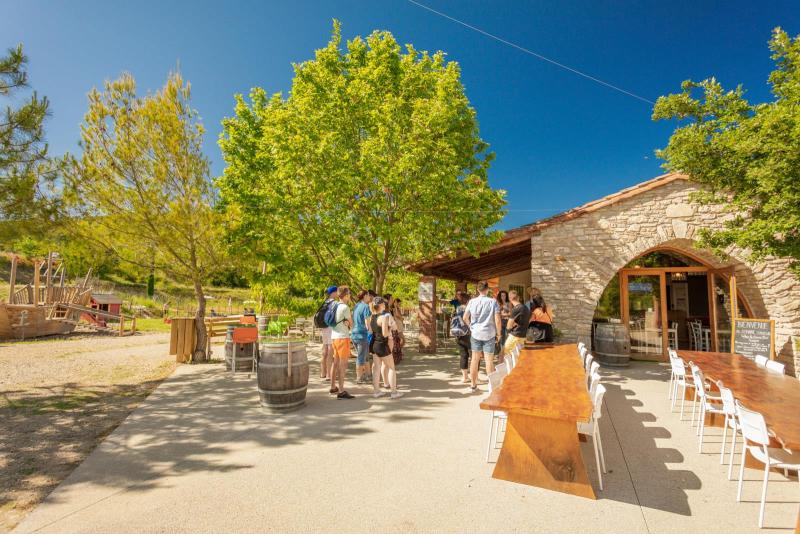
Wine lovers, have we got something for you… picture your next open-air holiday in a luxurious glamping pod, surrounded by colourful vineyards in the South of France.
This glorious campsite in the historic spot that is the Gorges de l‘Hérault hosts an abundance of deluxe dwellings, from bell tents to the camp’s very own novelty ‘wine houses’.
Not limited to those who enjoy a red, white or rosé, the on-site and nearby entertainment here is made for the whole family to relish, with river swimming, forest hikes, hang-gliding and much more awaiting you.
….. And there’s plenty more where these came from.
